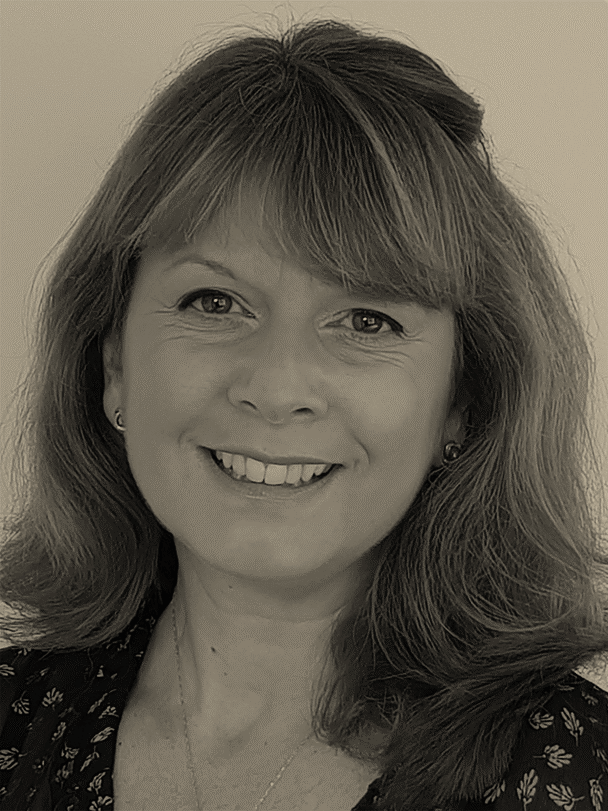“So you were the only US equities manager who told us back in the summer you thought it was Donald Trump for president all the way,” observes Marianne Weller, senior analyst at The Adviser Centre, by way of kicking off the meeting with Artemis’s head of US equities, Cormac Weldon. “Maybe they didn’t want to face the reality but most managers we spoke to just stayed on the fence!”
Research director Gill Hutchison and analyst Freddie Thompson are also at Artemis’s offices for a half-yearly review of its US Smaller Companies offering – one of dozens of manager meetings The Adviser Centre’s five-strong team carry out every month. Also present are Rosalie Brown, sales director, strategic partnerships at Artemis and – at The Adviser Centre’s kind invitation and purely as the quietest of flies on the wall – me.
At the time, what surprised me about Weller’s opening gambit was the idea there might be any professional investors who would dismiss the idea a two-horse race might conceivably be won by either runner – especially when, to all intents and purposes, the bookies had them broadly ‘evens’. What has stayed with me since, however, is how the comment highlights the regular nature of these research meetings.
For this fly, that puts a very different slant on things. When journalists meet a fund manager, they are essentially always starting from scratch whereas, when The Adviser Centre and other fund researchers do so, it is as part of an ongoing conversation – not so much ‘Once upon a time, there lived a beautiful portfolio …’ as ‘Right, as we were saying last time …’
Eyes on earnings
As if to underline the point, Hutchison begins the conversation proper, saying: “We saw you six months ago and have a pretty good recollection of what we talked about but it would be helpful just to think about 2024 as a whole. You produced a really interesting end-of-year report, where you said you started the year feeling quite optimistic about what smaller-caps could achieve versus larger-caps, so it might be worth digging into that.
“Ignoring the S&P500 – because the mega-cap stocks have been having their own little party – what about small-caps? I know that covers a myriad of businesses and all sorts of winners and losers – and it is just a crazy world in so many ways – but, broadly, how are you thinking about earnings prospects and valuations? Or is the environment so dynamic right now, it is difficult to see ahead?”
“It is interesting,” Weldon replies. “Sometimes we are asked what the fund’s P/E is – it is now about 26x – and the reaction can be, Oh, that sounds a bit high. But what that does not capture is, hopefully, the longevity of the growth and the profitability we have, right? I am actually inclined to think the average is irrelevant because it is just a mishmash of lots of different things and, obviously, the end of a process of selecting 60 different stocks.
“What is often underappreciated with the US relative to elsewhere is the prospective growth you can see – if you hit on a great idea, a great service, a great product, it’s like, OK, now there are 50 states to grow through.
When journalists meet a fund manager, they are essentially always starting from scratch whereas, when fund researchers do so, it is as part of an ongoing conversation – not so much ‘Once upon a time, there lived a beautiful portfolio …’ as ‘Right, as we were saying last time …’”
“I know it is not quite what you are asking but I will start answering your question this way – are we finding many good ideas? The interesting thing is, a lot of our better ideas had a pretty poor end of 2024. There was a sort of ‘Trump trade’ for a while but then it got completely obliterated by the bond trade. Looking ahead, there are a bunch of stocks we really like in the fund and for which earning season is important.
“As ever, investors are able to think whatever they want to until earning season has happened – because there is the data and there is the bond market and you can reflect it all in your portfolio. But then earnings come along and they will tell you whether or not you did the right thing– and we don’t actually think that much has really changed.
Infrastructure longevity
“Take some of our infrastructure stocks – they pulled back a lot. So let’s first make sure: is there any data we can see intra-quarter that tells us we are doing the right thing or the wrong thing by topping up? So that all feels good – the market has given us a break and we can increase holdings. Plus there is new stuff coming into the small-cap portfolio with really healthy upsides that we haven’t owned but really like.
“One aspect of all this is we are inclined to think the infrastructure programme has longevity even if – as I may well have said to you before – a US fund manager with the length of time I have in the market usually doesn’t want to get involved in thinking infrastructure spend is going to last, right? There have been so many false dawns and then the money and the will have not been there and it just hasn’t really happened.
“We probably discussed this last time in terms of what may or may not stay the same, whether Harris or Trump won – and we are pretty confident infrastructure is one of them. It is a fairly bipartisan thing, it brings investment into the domestic economy and, if you are not massively concerned with the budget, then that it is probably good money to spend. So we think there is a disconnect there – on valuations and volatility.”

Cormac Weldon, Artemis

Gill Hutchison, The Adviser Centre
In light of Trump’s fondness for the mantra ‘Drill, baby, drill’, Weller then moves on to ask about energy –noting it was the one sector on which Weldon had been negative in 2024. “We are not good at it so we are not going to do it,” he replies simply. “We do not believe we are going to create value there because most of it comes down to where the prices of oil and gas are going.
“If you zoom out a tiny bit further, however, and stretch the definition – not that much, but to utilities and the shortage of power in the US – that is something we have looked into with, for example our nuclear exposure and also with regard to power to data-centres. On average, the US is tight for power but there are areas, such as the Dakotas, that have a lot of excess power – and that is where the data-centres will go. So we are exploring that.”
Stress-free consumers
Later on, Weldon is asked for his views on the US consumer. “We are pretty optimistic,” he replies. “Productivity is good but wage growth is decent – it is still around 4% – while goods are deflating again. Food, drink and gasoline have rolled over so the lower-income consumers – let’s say the bottom 40% of income earners – are actually seeing their disposable income growing again.
“That is pretty positive because they had been feeling some stress from higher rates – and rates are still an issue, I would have to say. At the same time, the top 40% of income earners have arguably never had it better – they have an unbelievable amount of equity in their home, which they haven’t touched, incomes are good and, almost by definition, they are savers and not living on credit cards.
“Now, maybe the way the cycle ends is rates come down so far that people start cashing in equity on their homes and we have a huge consumption spurt. That is a possibility, at some point – or maybe it will be ‘higher for longer’ – but, at present, there is very little stress on any consumer and things are pretty good. So how is that translating? Well, we have a bit of housing-related, a restaurant company, an off-price retailer …
“I have to say, though – fitting new ideas into the portfolio can be difficult. For a long time now, we have told you our limit is ‘sort of between 40 and 60’ – and we are now bumping up against 60. You always have this tension between, But this is a great idea and I want to put it in the portfolio, versus, Are we just buying everything? Well, we will see – we want to be disciplined about this but maybe it goes a bit above 60 stocks.
“I mean, the number of stocks and businesses in our universe is enormous. So something somewhere is likely doing well – and our ability to find it is probably the limiting factor, right? Of course, there are pockets where we cannot find anything and there are some areas we do not look – for instance, biotech. But there is a lot going on and a lot of change happening and different businesses have an advantage at any particular time anyway.”
Bet your Boots?
As you may well have noticed, this fly has so far flown clear of quoting Weldon on individual stocks but, as I type, Boot Barn is a top-five holding so I am hopefully safe. “I had sort of been aware of the company,” he tells us. “But then it was the subject of a Jim Cramer podcast I was listening to and it was like, About Boot Barn? You cannot be serious!
“But it is a great business with a good brand and a growing number of stores. It is not particularly fashion-forward, it tends to sell at full price and covers both suited-and-booted and work-related usage. Also, what is often underappreciated with the US relative to the UK or elsewhere is the prospective growth you can see – if you hit on a great idea, a great service, a great product, it’s like, OK, now there are 50 states to grow through.”
I sense a cowboy renaissance coming,” observes Hutchison drily, before asking: “Clearly you feel animal spirits are good but – and I know this is a very open-ended question – what is your main worry? What are you preparing for? “Largely, it is perceptions over inflation and rates,” says Weldon. “Also, though, one thing about Trump is that the news just comes so fast, right?
“And it is like, did he say that? Did he not say it? What did he really say? OK – so now do we have to look at that? Or can we ignore it because it will all have changed by this time next week or tomorrow? Sometimes, you are like, Really – that just doesn’t sound like something that will happen, right? And, even if it did, it might not fly with the Supreme Court. Then, at other times, it can be, Well, that sounds like it could be interesting …” (Main article continues after box)
Real exposure
Asked about how flows have been into the £1.4bn fund, Cormac Weldon replies, “Pretty steady over the last quarter” – before checking with Rosalie Brown: “Is that fair?” “Totally fair,” she nods. “With each phase, people get a bit more confident about adding more to their small-cap allocations. So flows overall have been good on the US side – and quite broad in terms of coming from a range of different client types as well.”
“We love a killer stat – although, to my shame, I had not been aware of this one,” Weldon interjects. “Still, the team pulled together a chart of us against some of the funds the sales guys mention as our main competitors and our percentage of revenue from the US is far higher than any of those. To be clear, we did not cherry-pick them to make the chart look good! But I believe we are well in the 80s, whereas most are around 60% or 65%.”
“Just looking at it, we are around 88% whereas the nearest peer is at 80% and then a lot are significantly lower,” Brown confirms. “The message is, if people really want to be tapping into the growth in the real US economy, then this fund is giving them much more real exposure to that than a lot of its peers.”
“Again, I was not aware it was that high,” says Weldon. “It is the result of the analysts finding stocks we really like and us investing in them. On the one hand, we are pretty optimistic about the US economy but it is not like we screen out businesses because they are at a certain percentage. I do have to say, though, the strength of the analysts and their knowledge of their sectors and then, together, finding ideas and doing the work – it has been exceptional. That is the way we work together.”
AI’s cashflow concerns
The meeting has moved past the hour but Hutchison throws in one last Columbo-like question: “Taking your US stable as a whole, how have you been handling exposure to the ‘Mag Seven’?” “In the middle of last year, one of our analysts came back from a trip where he visited a lot of the big hyper-scalers,” Weldon replies. “And he was – and is – firmly of the view that, if we think they are going to back off spending on AI, we are wrong.
“AI spending is seen by the big players almost as existential. They think AI will be consequential – and we do too – but then they also see it as a risk if they do not spend enough. So that should be good for our small-cap holdings tied into data-centre building, for example – but it has also increased capital intensity for the spenders. In other words, it is reducing their free cashflow, which was an important supporter of valuations.
“If you step back maybe three years, why was big tech so good? It was a highly unusual situation of relatively high growth combined with unbelievable profitability – and not just reported earnings, but free cashflow. They were just cash machines – I mean, close to monopoly positions in a less capital-intensive sector and ticking every possible box in terms of what there was to like about them – right down to valuation.
“Today, they are trading in the mid to late-20s. Is that expensive? Well, yes – but fundamentals aren’t bad and something has to trade there, right? We can’t all trade below-average. But – and there is a ‘but’ – we do have to think about that free cashflow eroding and we do have to think about increased capital intensity. And both of those things are happening – even if they still have an awful lot of cash they could be spending.
Who benefits?
“So we still like Nvidia. We think the newest iterations of their technology will probably become more visible as the year goes on and that should kick the stock on again. Others will provide GPUs to the market but only really because the spenders want to keep a second player in the game. So AMD might get to 5% of the market – which is a big deal for them, of course – but we think Nvidia are so far ahead they stay ahead.
“As for the rest of the Mag Seven, we are quite overweight Amazon as there are a number of moving parts there – it is not just AI – and we are a bit overweight Microsoft, although we are thinking about that. As for Google and Apple, we are quite underweight. Apple, for example, is just far too expensive for what it is – plus there is some China risk and it is obviously highly dependent on its supply chain. Again, earnings will dictate.
“On software, meanwhile, it comes down to, Who is going to benefit from AI? And it is consumers, right? I think stuff will just get cheaper – just look at the head of Amazon saying how many hours of software-coding time by engineers the company could save by using AI. So you tell the AI machine what you want to do; it produces a load of code; and then you audit that code – it all takes an awful lot less time now.
“Now, could the people in this room go out and launch a competitor product to Salesforce? Probably not. But could somebody in the software business do so? And, over time, does pricing get eroded – and the really good EBITDA margins too – just through AI lowering the cost of entry, which presumably increases competition? I don’t know – we will see – but that was a long way of saying we are a very underweight software!”
The Adviser Centre on … Artemis US Smaller Companies
Snapshot: A North American equity fund that invests in small to medium-sized companies. The team focuses on companies with growth prospects that have been underestimated or overlooked by the market, but which they believe have great potential. Within its sector, the fund features in The Adviser Centre’s ‘Smaller to Mid-Cap, Growth-Biased’ category.
Opinion: This Adviser Centre Recommended fund is managed according to a well-established philosophy founded by Cormac Weldon, an experienced US equity market practitioner. Weldon leads a close-knit team with diverse skill sets. He has worked with some of them for many years, both at Artemis and Columbia Threadneedle Investments. The team is passionate about the long-term opportunities in the asset class, but they operate with a strong sense of risk. They consider the downside as much as the upside potential of each stock and work hard to ensure good diversification of underlying businesses in the portfolio.
To read more research on this fund from The Adviser Centre, please click here






